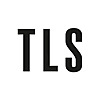A few weeks ago I was in Lausanne for a conference when I decided to play hooky for a day and explore the city. A friend directed me to the Collection de l’Art Brut, saying that it was memorable, but could be hard to take at times. Armed with my tourist bus pass and my innocence, I set off.
The art brut (“raw art”) movement was founded by the French painter Jean Dubuffet. Called “outsider art” in English, it referred to work by artists who had no formal, academic training. Dubuffet was particularly interested in art by psychiatric patients, inspired by Hans Prinzhorn’s book Artistry of the Mentally Ill (1922). In 1971 he donated a collection of works by 133 artists to the city of Lausanne, and the museum opened five years later. It now holds work by 400 people, though the permanent exhibition displays pieces by only sixty or so artists. I am used to museum labels that explain something about the work on display and its place within art movements. The plaques here relate short biographies of the creators, just detailed enough to give a sense of the complex lives they led.
Walking through the dark gallery I was drawn to the work of Anna Zemánková, a Moravian dental technician and mother of two children who began creating after a midlife depression. Usually working between four and seven in the morning, she painted imaginary flowers in pen and ink or pastels, which she sometimes embellished by embossing them or embroidering the paper. In one of her paintings a long stringed flower like a mountain dulcimer leaps out from a tuft of purple-green leaves, flanked by arcs in one direction and an orange and yellow net in the other. It reminded me of the freeform shapes I make when I’m doodling, but given full colour and texture. Zemánková, the plaque explains, felt that the world she entered when making art was more real than the one she usually inhabited, and that she connected with magnetic forces to do so.
Many of the works their power from an obessive repetition of simple details. One large-scale wooden piece was composed of rectangles craved with slight variations on a few geometric forms. Some were simple designs — spoked wheels, vertical rows of triangles — while others were abstract version of people or animals. These were made by Clément Fraisse, a French shepherd who was institutionalized after setting fire to his family’s farmhouse at the age of twenty-four. Confined to a small, wood-lined cell for a year, he used the handle of a broken spoon to carve the panels around him. When his spoon was taken away he used the handle of his chamber pot.
I was particularly moved by a series of embroideries by Toyo Hagino, a Japanese woman who has been living in a facility for those with mental disorders since the age of eighteen. When she was about fifty, she began embroidering small pieces. When the nursing staff found out, they gave her more materials to work with: larger swaths of cloth and the indigo thread she loves. Her creations feature abstract shapes, especially circles, some of which are thickly layered with thread. As she works she often speaks softly to herself, recalling the mother who taught her the art. “It seems that these ‘sewn images’ are mingled in her mind with the distant memory of her mother”, explains the plaque.
Some of the pieces I saw at the Collection de l’Art Brut would have been impressive in any context. The fact that the artist had no formal training made little difference: extensive practice had made up for that. Others, such as the works I’ve described here, needed some knowledge of the life to be appreciated. But that did not make them any less powerful. Many of the artists whose short biographies were on the walls had had experiences I could empathize with, but not understand. The recurring themes were: orphanhood or abandonment at a young age, poverty, childhood labour, intellectual disability, hallucinations, psychotic episodes, decades-long confinement. And yet. Here I am so often at my desk, enjoying all the resources and freedoms of the modern world, and still I worry about whether I can or should or dare to make art. Meanwhile, they used anything at hand to create, including envelopes, paper bags, broken pottery, seashells and fruit peel.
I had other uncomfortable thoughts. Outsider art is defined against institutions such as art schools and galleries, but much of the work I saw in Lausanne was created in psychiatric institutions, in many cases prompted or supported by staff. I wondered to what extent institutions can even be good for art, beyond providing time and resources. I’ve known a few people who found that formal training in creative writing or visual arts either hindered their work or stopped it altogether. What they hated was not training in technique, but the structure of mandatory analysis and evaluation that schools built around art: the devastating group critiques, the jargony artists’ statements, the demands to hew to one vision of art. “I just want to make pretty things”, said one friend frustrated with her classes, “but beauty is apparently not enough.” I left the Collection de l’Art Brut wary of romanticizing the lives of the people whose work it displayed, but keen to honour a creative energy that does not wait for permission.
Irina Dumitrescu teaches medieval literature in a small town in Germany
The post Unconfined creativity appeared first on TLS.

 By Times Literary Supplement | Created at 2024-09-25 15:27:33 | Updated at 2024-09-30 05:28:08
4 days ago
By Times Literary Supplement | Created at 2024-09-25 15:27:33 | Updated at 2024-09-30 05:28:08
4 days ago

